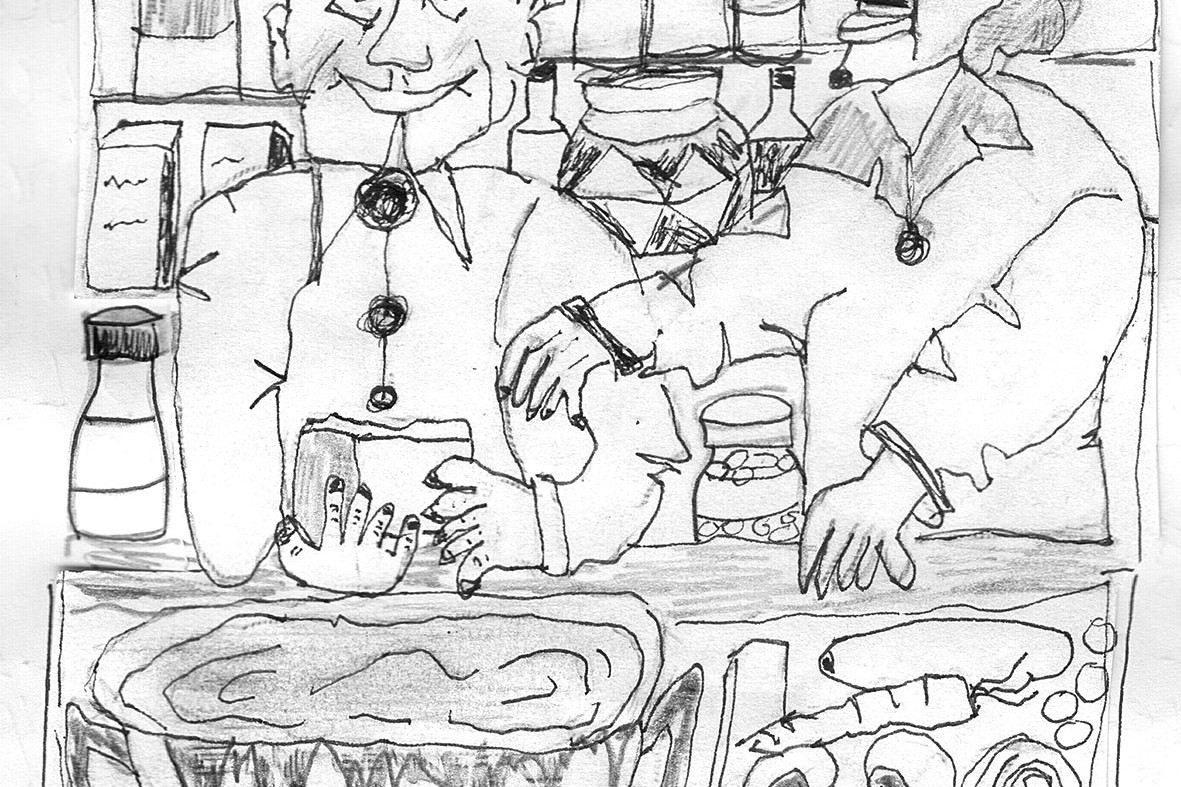General News
18 July, 2025
The good old days — Part 2 — With Brian Lennen
I previously mentioned the days before refrigeration. This involved ingenuity on the part of the householder as most foods in their matured state had a limited shelf life.

Either they were cooked while fresh or preserved in a variety of ways.
Salt, vinegar, sugar and oil were essential for preserving.
Plump apples hang down waiting to be picked near a large vegetable garden along with a poultry yard busy with hens.
Most backyards had many of the following varieties of fruit trees — usually a lemon tree covered with juicy, golden lemons all year round.
Stone fruit featured peaches, apricots and the hybridized nectarine.
Plump blood, mira and prune plums grew vigorously and produced large crops.
Cherry plums would pop up everywhere but had little culinary value.
You were blessed if you had an abundant harvest of oranges or mandarins.
At the laneway at the back of DeLew’s Milk Bar, the most remarkable mandarin tree grew. It was always covered in the sweetest and most delicious fruit.
As far as I know it is still in existence.
The fig, an expensive delicacy in Europe, is under-appreciated in Australia
I have noticed recently that it is appearing in dried form on food platters of the connoisseur.
Olive trees once planted as an evergreen decorative are now being harvested and pickled for their crop and oil.
Pears are delicate and stew brilliantly.
The nut trees, because of their natural durability, thrived in Australian conditions.
Walnuts, almonds, hazelnuts and chestnuts were the most common.
Today with the smaller suburban blocks and busier lifestyles, sadly the home grown fruit tree is diminishing.
European immigrants planted grape vines. This has developed into a world class wine industry and tourism hub.
Regular watering and an annual pruning, apart from raking up the autumn leaves, was all the maintenance required for the fruit trees.
Vegetable gardens are becoming scarce as they require land and constant maintenance.
Old-timers featured an on-going rotation of crops. Essential were potatoes, onions, lettuce, leeks tomatoes, beans (including broad), peas, pumpkins, marrows, sweet corn, cauliflower, cabbages, carrots, parsnips, broccoli and recent additions such as eggplants and zucchini.
Along the fence growing on a trellis we would find the passionfruit, the watermelon and cantaloupe.
Silverbeet once established is impossible to stop. Not to forget rhubarb.
All of this produce was utilised to its full extent. Steamed, boiled, baked, fried and pickled — they have delighted families for a long time.
Many have built their reputations around their preserves.
The abundance of local markets feature some home made varieties such as green tomato, cauliflower and zucchini pickles, chutneys and relishes.
Jams of many varieties feature fig, plum, strawberry, raspberry and the all time favourites apricot and marmalade.
The Sunday roast would feature most or all of the vegetables.
Lamb or mutton was the main roasted meat and it was usually supplemented with a mince-meat loaf fortified with onion, carrot and breadcrumbs.
It was sliced and served to compliment the meat. Any leftovers would be recycled into stews or pasties.
Apart from this, home-grown produce was enhanced by the home egg supply and the making of chicken soup with an old rooster boiled until tender, and flooded with fresh vegetables.
A huge pot was on the stove and ladled into large earthenware soup bowls and eaten with thick slices of buttered bread.
Depending on your location you might forage for wild mushrooms or collect mussels from the seaside to be jarred and pickled.
Many of the men were keen hunters, some had ferrets and used the grotesque rabbit traps.
It had to be remembered that rabbits, although cute, were in plague proportions. Mrs Lew had over a dozen ways of preparing the bunnies.
Fishing for redfin especially, and yabbying in the local creeks and dams was popular.
In season wild ducks were hunted and considered a delicacy by many.
None of the butcher’s cuts were wasted. Brains, kidneys, sweet-breads, lamb’s fry and tripe were “offal” that was much in demand.
I actually witnessed two men having a fight over Stan Gowers’ last remaining sweet-breads. Offal was often used to make potted meat.
Baking was a special talent that usually involved a flour base and lard or butter if available.
This was converted into a variety of desserts.
The fruit cake was a perennial favourite. In its tin it would last for ages if undiscovered.
The addition of dried fruit and nuts bolstered the substance of the cake.
Puddings of all varieties were served in large portions with custard to fill the hungriest belly.
The most popular puddings were bread and butter, sago and rice.
Nothing was wasted. After school we would have bread on dripping as we hurried out to play with our mates.
My grandfather had a banana on fried bread every morning for breakfast (he died accidently at the age of 99).
I think the food we cultivated and consumed back in the good old days was more wholesome, without all the added chemicals and preserves you find in today’s offerings.